#mollusc fossil
Explore tagged Tumblr posts
Photo

Fossil Chalk Gastropod | Grey Chalk Cretaceous Clyde Sussex UK | Genuine Specimen with COA
Own an authentic and beautifully preserved chalk gastropod fossil from the Grey Chalk Formation of the Cretaceous period, discovered in Clyde, Sussex, UK. This fossilized sea snail is a fascinating example of ancient molluscan life that once inhabited the warm, shallow seas covering Europe over 90 million years ago.
Fossil Type: Marine Gastropod (Sea Snail)
Geological Period: Late Cretaceous (~100.5 to 89.8 million years ago)
Formation: Grey Chalk Formation
Location: Clyde, Sussex, United Kingdom
Scale Rule: Squares/Cube = 1cm (Refer to photo for full sizing)
Specimen: The specimen pictured is the exact item you will receive
Authenticity: All of our fossils are 100% genuine specimens and come with a Certificate of Authenticity
Geological and Paleontological Context
This fossil represents a gastropod mollusc—a marine snail that lived on or near the seafloor during the Late Cretaceous. These creatures thrived in nutrient-rich chalk sea environments, where fine sediments preserved their coiled shells in remarkable detail.
Phylum: Mollusca
Class: Gastropoda
Order: Sorbeoconcha (tentative)
Superfamily: Uncertain; common families in the chalk include Turritellidae and Cerithiidae
Geological Stage: Likely Cenomanian to Turonian (~100–90 million years ago), based on Grey Chalk stratigraphy
Depositional Environment: Shallow marine shelf with fine calcareous sediment; excellent preservation conditions for invertebrate fauna in chalk beds
Morphological Features: High-spired or turreted coiled shell, multiple whorls, often with surface ornamentation such as ribs or fine growth lines
Notable: Gastropods are less commonly preserved than echinoids or bivalves in the Grey Chalk, making this a desirable and interesting fossil for collectors
Biozone: Could be associated with ammonite or inoceramid bivalve zones within the Lower to Middle Grey Chalk, such as the Mantelliceras or Inoceramus zones
Identifier: Identification to genus/species level may require specialist morphological analysis; fossils like these have been documented since the 19th century in British chalk paleontology
Why This Fossil Is Special
This gastropod fossil is a well-preserved example of ancient marine life from one of the UK’s most scientifically significant fossil beds. It offers insight into the biodiversity of the Cretaceous seas and is ideal for collectors or educational display.
Why Buy From Us?
100% genuine fossil with Certificate of Authenticity
Exact specimen shown in photo is the one you will receive
Carefully selected from reputable fossil sites
Perfect for collectors, educators, or as a unique natural history gift
Add this beautifully preserved Cretaceous chalk gastropod fossil from Clyde, Sussex, UK to your collection—a tangible piece of marine history from over 90 million years ago.
#fossil chalk gastropod#Cretaceous gastropod#Grey Chalk fossil#Clyde Sussex fossil#UK fossil gastropod#marine fossil#chalk fossil snail#certified fossil#fossil with certificate#genuine fossil#fossil sea snail#Cretaceous sea life#mollusc fossil#fossil collection#natural history specimen
0 notes
Text

Coelacanth Sketch
Idea for a possible traditional canvas painting that I may try paint soon
#my art#sketch#brainstorm#coelacanth#ancient fish#marine#fish#prehistoric#Thinking of doing some irl canvas paintings based on prehistoric fish/molluscs maybe so this is me just sketching some ideas#digital art#art#living fossil#they are such cool fish
788 notes
·
View notes
Text
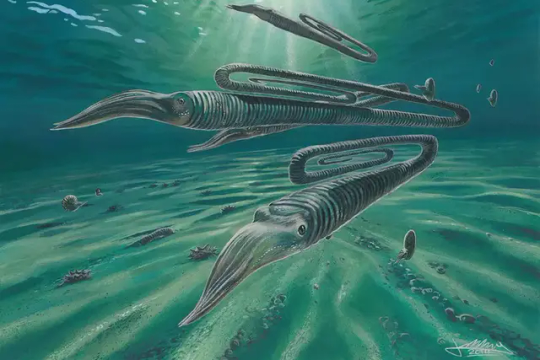
Convergent evolution is the evolution of 'analogous' or similar structures in organisms that are not closely related. Such as the wings of insects, birds and bats. One potential example of this is the Diplomoceras maximum, an extinct squid-like creature who is clearly analogous to, or a distant cousin of Clippy the paperclip. This amazing creature lived 68 million years ago, with the most notable fossil found at the cephalopod rich López de Bertodano Formation of Seymour Island, Antarctica. An area that was formerly warmer before further movement of tectonic plates. The fossil shell measured an impressive 1.5 metres and is formed from ridges, speculated to grow a section annually. These ribs are thought be similar to tree rings, being used for dating samples and gaining insight about the environment of the prehistoric sea, such as measuring the carbon and oxygen isotopes in the shell. Paleoart by James McKay
#marine biology#marine life#marine animals#ocean animals#marine zoology#cephalopods#molluscs#paleontology#fossils#ocean#wet beast wednesday#marine ecosystem#marine#zoology#animal facts#animalia#animal#sea animals#sea creature#sea creatures#sea life#ocean life
205 notes
·
View notes
Text

Flynn likes to be involved with everything I do. If he sees me crouch down to look at something &/or pick it up, he likes to come & inspect it as well. In case it's interesting. Or edible. Or both.
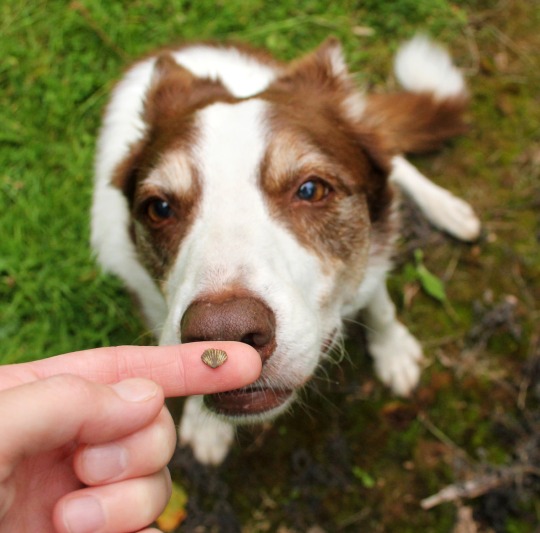
In this case, I'd found a fossil. According to Flynn this falls in the "Not Interesting" category but he gave it a polite sniff all the same. Like I politely praise him when he finds & shows me puddles & molehills. We humour each other.
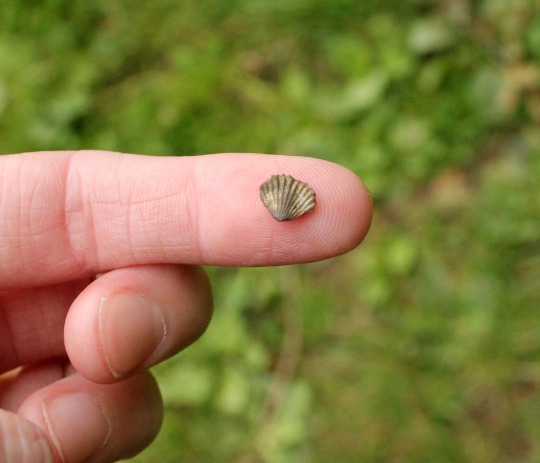
Such a teeny tiny fossil! It's one of the smallest I've found. Probably at least 420 million years old, which is just completely wild.
#I've got a fair sized collection of fossils now#mostly either brachiopods - which look like bi-valve molluscs but aren't... & corals#some of the shell fossils are very well preserved & almost look like they came off a beach that day!#I find them on farmland - ploughing turns the soil & they pop up to the surface. also there are 1 or 2 old quarries in the woods#this one was on the footpath - I bent down to pick up Flynn's toy & spotted it#silurian#fossil#shell#england#dog#flynn
227 notes
·
View notes
Text
March Madness Round 2 Bracket 1Happy St. Patrick's Day to all my fellow Irishman (okay, so I only have 1/4 Irish blood but who's counting?).
Today we get to see who won the first two brackets of round one and are now competing against each other. The first competitor is Campanile giganteum! In a landslide victory against Platyceramus (114 vs 75) the giant snail gets to move on! It is found in the Paris Basin in France and lived during the Eocene Epoch 56-33.9 Ma.
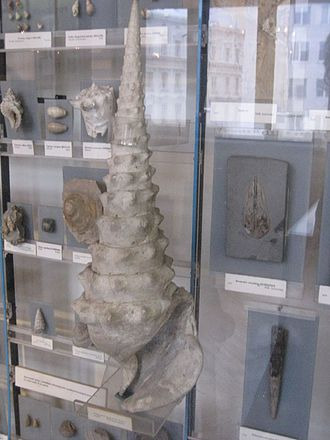
And it is going up against the giant crinoid Seirocrinus subangularis which beat out Endoceras by a mere 7 points. Seirocrinus is found in Jurassic rocks in Germany.

#paleontology#fossils#science#science education#march madness#science side of tumblr#crinoid#gastropods#molluscs#echinoderm
13 notes
·
View notes
Text







Illustration of Cretaceous Bivalvia (previously called Lamelliabranchia) by Thomas Alfred, Brock from the Monograph of Palaeontographical Society Vol. 63 (1909)
7 notes
·
View notes
Text
Praise be

Omastar - Testasenex spiculum
Full print available here!
#pokemon#digital art#art#my art#nintendo#pokemon art#pkmn#pkmn art#kanto#fossil#fossils#fossil pokemon#ammonite#molluscs#mollusk#mollusk pokemon#omanyte#omanyte art#omastar#omastar art#water type#rock type#cephalopod#fan art
45 notes
·
View notes
Photo


a few more fossil molluscs from NZ, that @purrdence found at a B&B on the Fossil Coast. Unfortunately she didn’t ask exactly where the owner had found them, so narrowing down an ID is beyond me, beyond two scallops and what might be a brachiopod.
14 notes
·
View notes
Text
Molluscs may have been among the earliest life on Earth. My snails come from a line, hundreds on millions of years long, of guys who moved toward food and munched it with comical little mouths. They continue this wonderful tradition in a jar on my desk. I am proud of them.
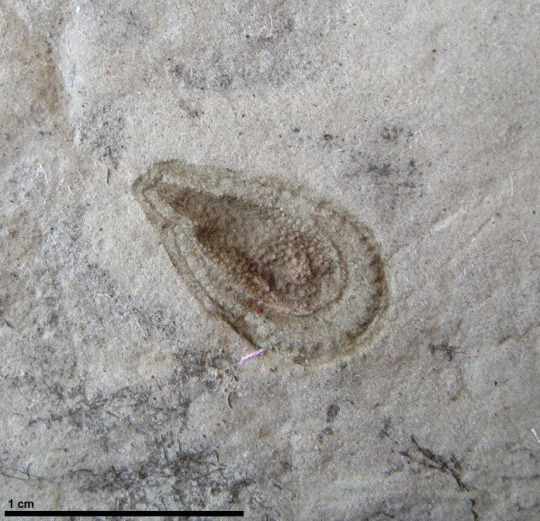
Like this *might* be the ancestor of the guys in a jar next to me. It's from like 558-555 million years ago. "The slug-like organism fed by scratching the microbial surface on which it dwelt", just like my fellas are doing as I write this. (Image, info, & quote source: https://en.wikipedia.org/wiki/Kimberella ).
1 note
·
View note
Photo

KOSMOCERAS Ammonite Fossil Jurassic Oxford Clay Lower Callovian Cotswold Water Park Gloucestershire UK Specimen
This listing features a finely preserved Kosmoceras ammonite fossil, collected from the Oxford Clay Formation in the Cotswold Water Park, Gloucestershire, UK. This authentic Jurassic marine fossil dates to the Lower Callovian Stage of the Middle Jurassic and is provided with a Certificate of Authenticity. The photographs show the exact specimen you will receive.
Kosmoceras is a well-known genus of Middle Jurassic ammonites, commonly associated with the Jason Zone of the Lower Callovian (~165 million years ago). It belongs to:
Order: Ammonitida
Superfamily: Stephanoceratoidea
Family: Kosmoceratidae
The Oxford Clay Formation represents a deeper marine depositional environment, characterised by fine clays and silts that accumulated on a low-energy seabed. These conditions were ideal for preserving delicate shelled organisms, particularly ammonites.
Morphological Features:
Moderately evolute shell with visible inner whorls
Broad ribs extending from the umbilicus across the flank
Characteristic tubercles (nodes) on the flanks and ventrolateral areas
Distinct suture pattern typical of Kosmoceratidae
These robust and highly ornamented ammonites are popular with collectors and are important for biostratigraphic correlation within the Jurassic system of northwest Europe.
Specimen Details:
Genus: Kosmoceras (possibly Kosmoceras jason)
Fossil Type: Ammonite Shell
Geological Formation: Oxford Clay
Biozone: Jason Zone (Lower Callovian)
Geological Age: Middle Jurassic (~165 million years ago)
Location: Cotswold Water Park, Gloucestershire, UK
Depositional Environment: Deeper marine shelf (fine-grained clay sediments)
Family: Kosmoceratidae
This fossil is ideal for ammonite collectors, fossil enthusiasts, and educational display. It showcases the striking ribbing and ornamentation that make Kosmoceras a centrepiece in Jurassic fossil collections.
Scale rule squares/cube = 1cm. Please refer to the photo for full sizing and condition.
All of our Fossils are 100% Genuine Specimens & come with a Certificate of Authenticity.
#Kosmoceras ammonite fossil#Oxford Clay ammonite#Jurassic ammonite Cotswolds#Lower Callovian ammonite#Kosmoceras Gloucestershire fossil#ammonite fossil UK#Kosmoceratidae fossil#Callovian marine fossil#Jurassic fossil mollusc#Kosmoceras fossil with certificate#fossil ammonite with ribbing and tubercles#Jurassic ammonite England#Kosmoceras jason ammonite#Lower Callovian Kosmoceras#Cotswold Water Park fossil ammonite
0 notes
Text
#paleontology#new species#punk ferox#emo vorticaudum#aculifera#mollusc#invertebrate#exceptional preservation#excellent names
692 notes
·
View notes
Text

♪ It's time for Fish Mollusc Fact Friday♪
Nautiluses are living fossils which have remained relatively unchanged for over 500 million years! They have multiple tentacles and unique chambered shells which they can completely withdraw into - the opening of the shells can even be covered with their hood, which is made up of two modified tentacles!
There are currently 9 living species of nautilus, and the species depicted here is the Palau Nautilus! (On a side note, there is also a species of octopus called the Paper Nautilus, despite not actually being a nautilus🐙)
439 notes
·
View notes
Text

THE OLDEST PREDATOR-PREY ARMS RACE UNCOVERED IN CAMBRIAN FOSSILS
A recent fossil study has revealed the oldest known evidence of an evolutionary arms race between predators and prey, dating back 517 million years to the Cambrian oceans. Researchers examined fossilized shells of Lapworthella fasciculata, a small shelled animal, and found that over 200 of them had holes likely caused by an unknown drilling predator. This predator, possibly a mollusc or soft-bodied worm, was able to penetrate the prey’s defences, triggering an adaptive response.
Interestingly, over time the shells of L. fasciculata became thicker, suggesting that the animal developed mechanisms to reinforce its shell and better withstand attacks. As shell thickness increased, so did the number of perforations, indicating that the predator also improved its ability to drill through the prey’s defences. This back-and-forth adaptation is a clear example of an evolutionary arms race, where each species evolves in response to the other in a constant battle for survival.
This discovery is crucial for understanding how predator-prey interactions drove early animal evolution, and supports the idea that predation played a key role in the diversification of biomineralizing organisms during the Cambrian explosion. Published in Current Biology, the study offers a fascinating glimpse into marine life over 500 million years ago and highlights how quickly evolutionary changes can emerge under environmental pressures.
main image: Examples of Lapworthella fasciculata shells (under scanning electron microscope) from Flinders Ranges, South Australia, showing holes made by a drilling predator. Scale bars represent 200 micrometres (0.2 mm).
Reference: Bicknell et al., 2025. Adaptive responses in Cambrian predator and prey highlight the arms race during the rise of animals. Current Biology.
599 notes
·
View notes
Text
Trivia Tuesday!
When you go bird watching all day you forget to post trivia lol.
When did ammonites first evolve? (Hint: I have given the answer in other posts)

12 notes
·
View notes
Text
The fossil beaches were the main feature!




You ever think about how Mr. Darcy gets his ass absolutely destroyed by Elizabeth, immediately realizes just how much of an ass he’s been, writes a letter apologizing for what he can and explaining what he stands by, then fucks all the way off while fixing what he can for her completely anonymously without ever once expecting any sort of reconciliation let alone reward?
#who doesn't love dinosaurs#yeah small molluscs count as dinosaurs in this context#I'm a serial pebble and shell hunter#I need to go back and get moar#I can haz fossils#who needs diamonds when you can have petrified squid
643 notes
·
View notes
Text
#1976 - Sectipecten allani

photo by @purrdence at Ruakari Cave in New Zealand.
A large Oligocene scallop, first described in 1923. Apparently it can be abundant in fossil beds from that period, although individuals can vary widely in their exact shape. It appears they were derived from an Australian genus, Mesopeplum.
New Zealand is much more geologically active than Australia, with frequent volcanic eruptions, earthquakes, very large faults, and plenty of opportunity for fossil beds to be lifted above sea level and eroded into caves, for example.
4 notes
·
View notes